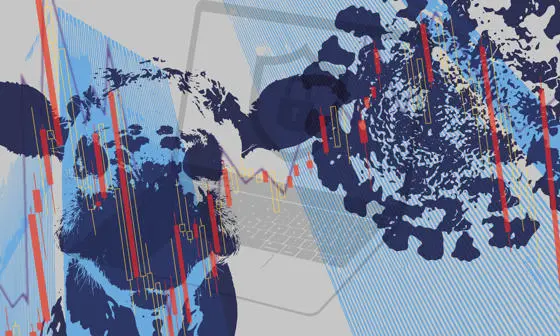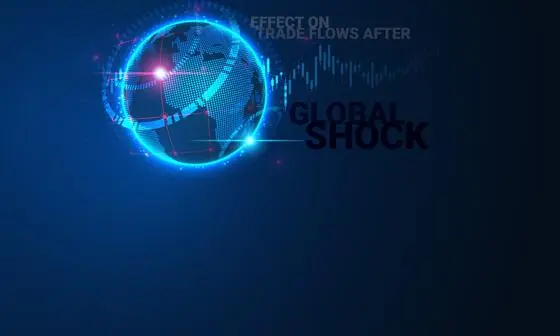The illusion of control: why the financial sector is more vulnerable than ever to a financial crisis

Contents
In 2017, Mark Carney, then still Governor of the Bank of England, and Head of the Financial Stability Board, told us that: “Over the past decade, G20 financial reforms have fixed the fault lines that caused the global financial crisis.” His claim was that the regulation put in place since 2008 had succeeded in making the financial sector less vulnerable to a systemic crisis.
In my book The Illusion of Control, I argue the opposite. Despite the costly and onerous actions that regulation demands, a major financial crisis is now more likely than ever. Regulation has made us much better at managing day to day fluctuations, but at the expense of undervaluing the endogenous risk in the system that may lead to systemic crises. The false sense of security that results is an illusion of control.
Where we pin the blame for a crisis depends on how we measure the amount of risk in the system.
Successful financial regulation must balance economic growth with risk management – but predicting risk accurately is impossible
Financial regulation is put in place to help us to manage the trade-off between safety and growth. Therefore, the primary objective of regulation is to maximise economic growth in a regulatory regime designed to adequately protect the people who use the system and that does not give rise to too many crises.
Where we pin the blame for a crisis depends on how we measure the amount of risk in the system. We cannot observe risk directly, and so we must attempt to infer it using historical data on prices and events. There are many models for measuring risk, they all disagree, and there is no way to tell which is the most accurate. Yet we persist in the belief that actors in the market all have access to a single riskometer, a mythical device that can capture the true level of risk in the system and express it as a precise number.
It is futile to try to construct an accurate riskometer. Any measure of risk, even if it captures historical data accurately at high frequency, suffers from the problem that almost all the data that is fed into the model comes from mundane day-to-day events, not the big extremes that culminate in a crisis. As a result, any projection of large risk relies partly on the assumptions of the model’s builder, and so it would be rash to use them to forecast systemic risk levels. Technically easy to do, but meaningless, creating misplaced confidence in the accuracy of the measurement.
Also, different crises – such as those of 2008 and COVID-19 – have different drivers of risk, demanding different policy responses. Crises occur in different places, at different times, and so it may be hard to learn from history. In 2012, economists Laeven and Valencia found that the typical OECD country suffers a systemic crisis only once in 43 years, making it rather difficult to train the risk models.
To increase the shock absorption capacity of the system...regulation would have to abandon the idea of the level playing field, reducing regulation on new entrants with new business models in areas like FinTech and DeFi.
One-size-fits-all regulation will not avert the next financial crisis
The build-up of risk in a system may take years or even decades of apparent calm. That calm itself may help to create systemic risk. In the words of Hyman Minsky, “Stability is destabilising”. While risk builds up in a system, the models used by private investors will report a measure of risk that is uncorrelated with actual systemic risk.
Regulation responds to changes in the state of the world. But events that create systemic risk in recent history – the global crisis in 2008, Russia’s invasion of Ukraine or Brexit, for example – are largely political. An unelected macroprudential regulator has limited legitimacy or ability to act to reduce that risk.
In the quest to recognise and mitigate reported risks, the regulators favour one-size-fits-all regulation that governs short-term behaviour of participants in response to events – uniform regulation aiming for a level playing field. It focuses on measurable factors, driven by exogenous events. Therefore, regulated entities will tend to respond in similar ways to those events. It also addresses only a small part of the action space because it ignores internally driven changes – the risk-amplifying reactions of market participants.
Now imagine that we choose less uniformity in regulation and create more diverse financial institutions that are free to choose different responses to these events. This would help to increase the shock absorption capacity of the system, therefore improving automatic stabilisation. To do this, regulation would have to abandon the idea of the level playing field, reducing regulation on new entrants with new business models in areas like FinTech and emerging financial technology DeFi (decentralised finance).
This may be a hard sell to the risk-averse designers of regulation. It is also likely to be unpopular with the incumbents who would prefer existing regulation – not least because the high fixed costs of being part of that regime protect them from entrants. The alternative is to continue to create regulation that is not fit for purpose.
Download a PDF version of this article




